Experimental Study of Injection Parameters on the Performance of a Diesel Engine with Fischer–Tropsch Fuel Synthesized from Coal
Abstract
:1. Introduction
2. Materials and Methods
2.1. Research Engine Test Bench
2.2. Test Fuel
2.3. Test Conditions
3. Results
3.1. Combustion Process Analysis
3.2. Combustion Feature Analysis
3.3. Combustion Stability Analysis
3.4. Emissions Analysis
3.5. Efficiency Analysis
4. Conclusions
Author Contributions
Funding
Acknowledgments
Conflicts of Interest
References
- Di Sarli, V.; Landi, G.; Lisi, L.; Di Benedetto, A. Ceria-coated diesel particulate filters for continuous regeneration. AIChE J. 2017, 63, 3442–3449. [Google Scholar] [CrossRef]
- Di Sarli, V.; Di Benedetto, A. Operating map for regeneration of a catalytic diesel particulate filter. Ind. Eng. Chem. Res. 2016, 55, 11052–11061. [Google Scholar] [CrossRef]
- Liu, H.F.; Li, S.J.; Zheng, Z.Q.; Xu, J.; Yao, M.F. Effects of n-butanol, 2-butanol, and methyl octynoate addition to diesel fuel on combustion and emissions over a wide range of exhaust gas recirculation (EGR) rates. Appl. Energy 2013, 112, 246–256. [Google Scholar] [CrossRef]
- Chen, Z.; Liu, J.P.; Han, Z.Y.; Du, B.; Liu, Y. Study on performance and emissions of a passenger-car diesel engine fueled with butanol-diesel blends. Energy 2013, 55, 638–646. [Google Scholar] [CrossRef]
- Dolanimi, O.; William, L.R.; Fang, T.G.; Nirajan, T. Investigation of the effects of renewable diesel fuels on engine performance, combustion, and emissions. Fuel 2015, 140, 541–554. [Google Scholar] [CrossRef]
- Shubhar, K.D.; Kihyun, K.; Ocktaeck, L. Experimental study on non-vaporizing spray characteristics of biodiesel blended gasoline fuel in a constant volume chamber. Fuel Process. Technol. 2018, 178, 322–335. [Google Scholar] [CrossRef]
- Ouyang, Z.Q.; Liu, W.; Man, C.B. Experimental study on combustion, flame and NOx emissions of pulverized coal preheated by a preheating burner. Fuel Process. Technol. 2018, 179, 197–202. [Google Scholar] [CrossRef]
- Shi, X.T.; Zhang, X.L.; Dong, C.W. Economic performance and emissions reduction of supply chains in different power structures: Perspective of sustainable investment. Energies 2018, 11, 983. [Google Scholar] [CrossRef]
- Ansari, N.A.; Sharma, A.; Singh, Y. Performance and emission analysis of a diesel engine implementing polanga biodiesel and optimization using Taguchi method. Process. Saf. Environ. Prot. 2018, 146–154. [Google Scholar] [CrossRef]
- Yatish, K.V.; Lalithamba, H.S.; Suresh, R. Optimization of bauhinia variegate biodiesel production and its performance, combustion and emission study on diesel engine. Renew. Energy 2018, 561–575. [Google Scholar] [CrossRef]
- Park, S.; Kim, H.J.; Shin, D.H. Effects of various split injection strategies on combustion and emissions characteristics in a single-cylinder diesel engine. Appl. Therm. Eng. 2017, 422–431. [Google Scholar] [CrossRef]
- Paul, N.; Keith, V.; Brent, B.; Nigel, N. Emissions from trucks using Fischer-Tropsch diesel fuel. SAE Tech. Pap. 1998. [Google Scholar] [CrossRef]
- Xie, X.M.; Michael, W.; Jeongwoo, H. Assessment of fuel-cycle energy use and greenhouse gas emissions for Fisher-Tropsch diesel from coal and cellulosic biomass. Environ. Sci. Technol. 2011, 45, 3047–3053. [Google Scholar] [CrossRef] [PubMed]
- Ma, H.; Qiao, Y.; Christian, M.P. The interaction between Fischer-Tropsch wastewater and humic acid: A NMR study of butanol isomers. Fuel Process. Technol. 2018, 179, 296–301. [Google Scholar] [CrossRef]
- Gill, S.S.; Tsolakis, A.; Dearn, K.D. Combustion characteristics and emissions of Fischer-Tropsch diesel fuels in IC engines. Prog. Energy Combust. Sci. 2011, 37, 503–523. [Google Scholar] [CrossRef]
- Mikael, H.; Kjell, A. A review on coal-to-liquid fuels and its coal consumption. Int. J. Energy Res. 2010, 34, 848–864. [Google Scholar] [CrossRef]
- McMillian, M.H.; Gautans, M. Combustion and emission characteristics of Fischer-Tropsch and standard diesel fuel in a single-cylinder diesel engine. SAE Pap. 2001. [Google Scholar] [CrossRef]
- Elbashir, N.O.; Bukur, D.B.; Durham, E.; Roberts, C.B. Advancement of Fischer-Tropsch synthesis via utilization of supercritical fluid reaction media. AIChE J. 2010, 56, 997–1015. [Google Scholar] [CrossRef]
- Kim, Y.D.; Yang, C.W.; Kim, B.J. Fischer-tropsch diesel production and evaluation as alternative automotive fuel in pilot-scale integrated biomass-to-liquid process. Appl. Energy 2016, 301–312. [Google Scholar] [CrossRef]
- Song, C.L.; Gong, G.H.; Song, J.O. Potential for Reduction of Exhaust Emissions in a Common-Rail Direct-Injection Diesel Engine by Fueling with Fischer-Tropsch Diesel Fuel Synthesized from Coal. Energy Fuels 2010, 26, 530–535. [Google Scholar] [CrossRef]
- Zuo, P.; Wu, Z.F.; Wang, T.; Shi, J.H.; Liu, L. Influence of Fischer-Tropsch diesel/Methanol blended fuel on combustion and vibration characteristics of diesel engine. Chin. Intern. Combust. Engine Eng. 2016, 37, 28–31. [Google Scholar]
- Liu, L.D.; Song, C.L.; Lu, G.; Zhang, H.W.; Pei, Y.Q. Effects of Fischer-Tropsch Diesel Fuel on Combustion Characteristics of Diesel Engine with High-Pressure Common Rail System. J. Tianjin Univ. 2011, 9, 810–815. [Google Scholar]
- Hao, B.; Song, C.L.; Lu, G. Evaluation of the reduction in carbonyl emissions from a diesel engine using Fischer-Tropsch fuel synthesized from coal. Fuel 2014, 133, 115–122. [Google Scholar] [CrossRef]
- Huang, Y.C.; Zhou, L.B.; Wang, S.X.; Pan, K.Y. Performance and Emissions of a Direct Injection Diesel Engine Operating on Fischer-Tropsch (F-T) Diesel Fuel. Chin. Int. Combust. Engine Eng. 2007, 28, 71–75. [Google Scholar]
- Wang, J.X.; Shuai, S.J. Automotive Engine Fundamentals, 1st ed.; Tsinghua University: Beijing, China, 2011; pp. 182–218. ISBN 978-977-302-22029-9. [Google Scholar]
- Liu, J.H.; Yao, A.R.; Yao, C.D. Effects of diesel injection pressure on the performance and emissions of a HD common-rail diesel engine fueled with diesel-methanol dual fuel. Fuel 2015, 140, 192–200. [Google Scholar] [CrossRef]
- Dou, Z.C.; Yao, C.D.; Wei, H.Y. Experimental study of the effect of engine parameters on ultrafine particle in diesel/methanol dual fuel engine. Fuel 2017, 192, 45–52. [Google Scholar] [CrossRef]
- Chen, Z.F.; Yao, C.D.; Wang, Q.G. Study of cylinder-to-cylinder variation in a diesel engine fueled with diesel/methanol dual fuel. Fuel 2016, 170, 67–76. [Google Scholar] [CrossRef]
- Yin, Z.H.; Yao, C.D.; Geng, P.L. Visualization of combustion characteristic of diesel in premixed methanol–air mixture atmosphere of different ambient temperature in a constant volume chamber. Fuel 2016, 174, 242–250. [Google Scholar] [CrossRef]
- Heywood, J.B. Internal Combustion Engine Fundamentals, 1st ed.; McGraw-Hill: New York, NY, USA, 1988; pp. 567–620. ISBN 0-07-028637-X. [Google Scholar]
- Zheng, Z.Q.; Wang, X.F.; Zhong, X.F. Experimental study on the combustion and emissions fueling biodiesel/n-butanol, biodiesel/ethanol and biodiesel/2,5-dimethylfuran on a diesel engine. Energy 2016, 115, 539–549. [Google Scholar] [CrossRef]
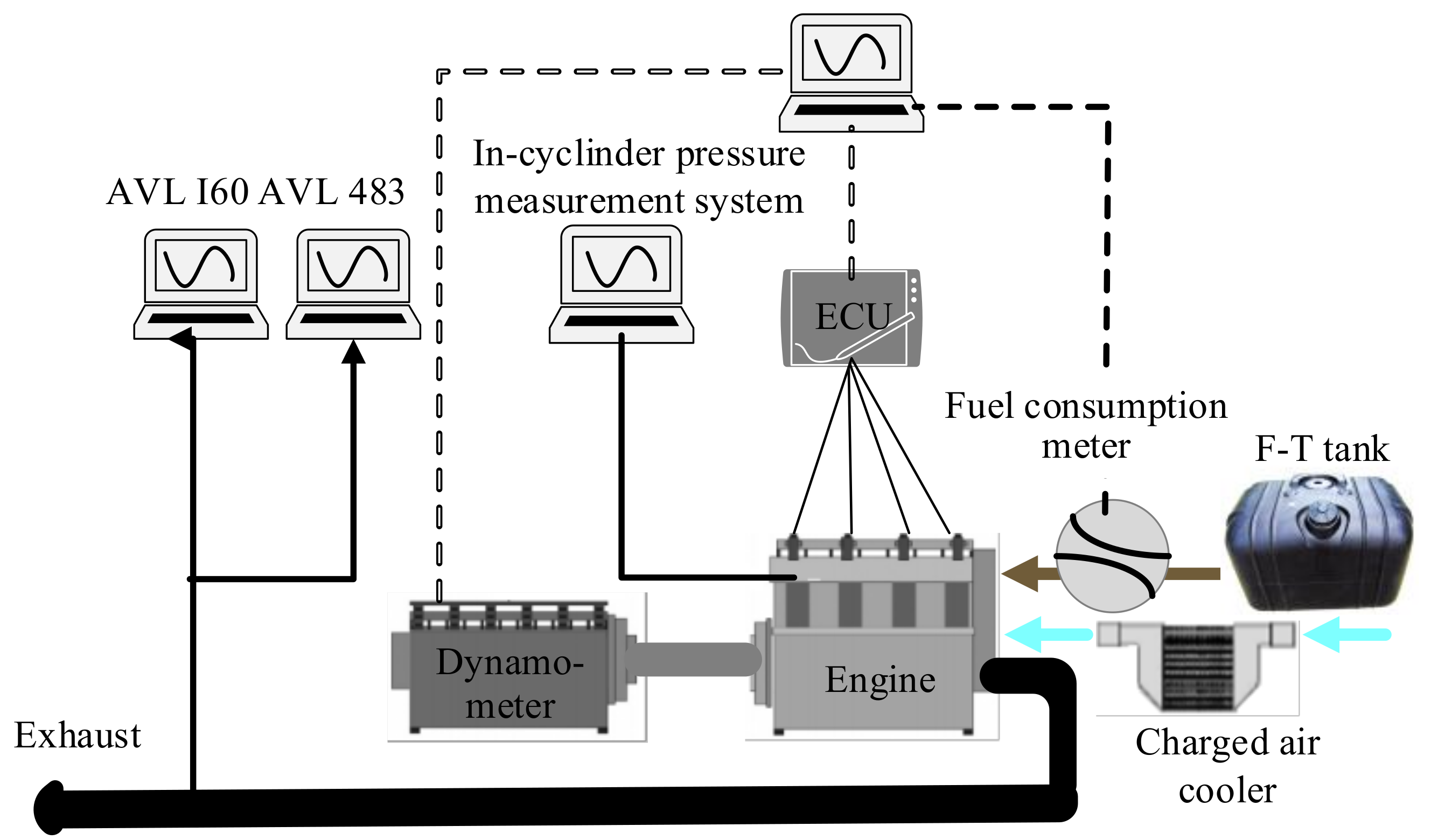
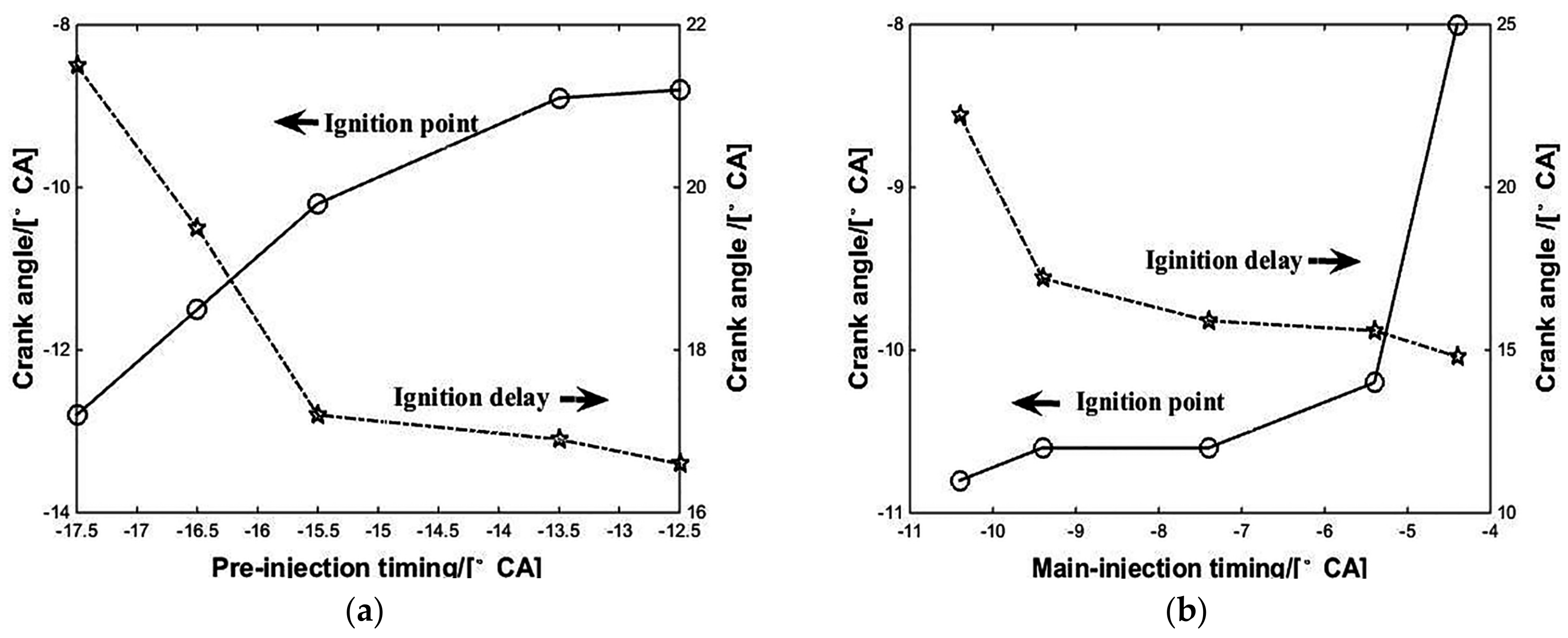
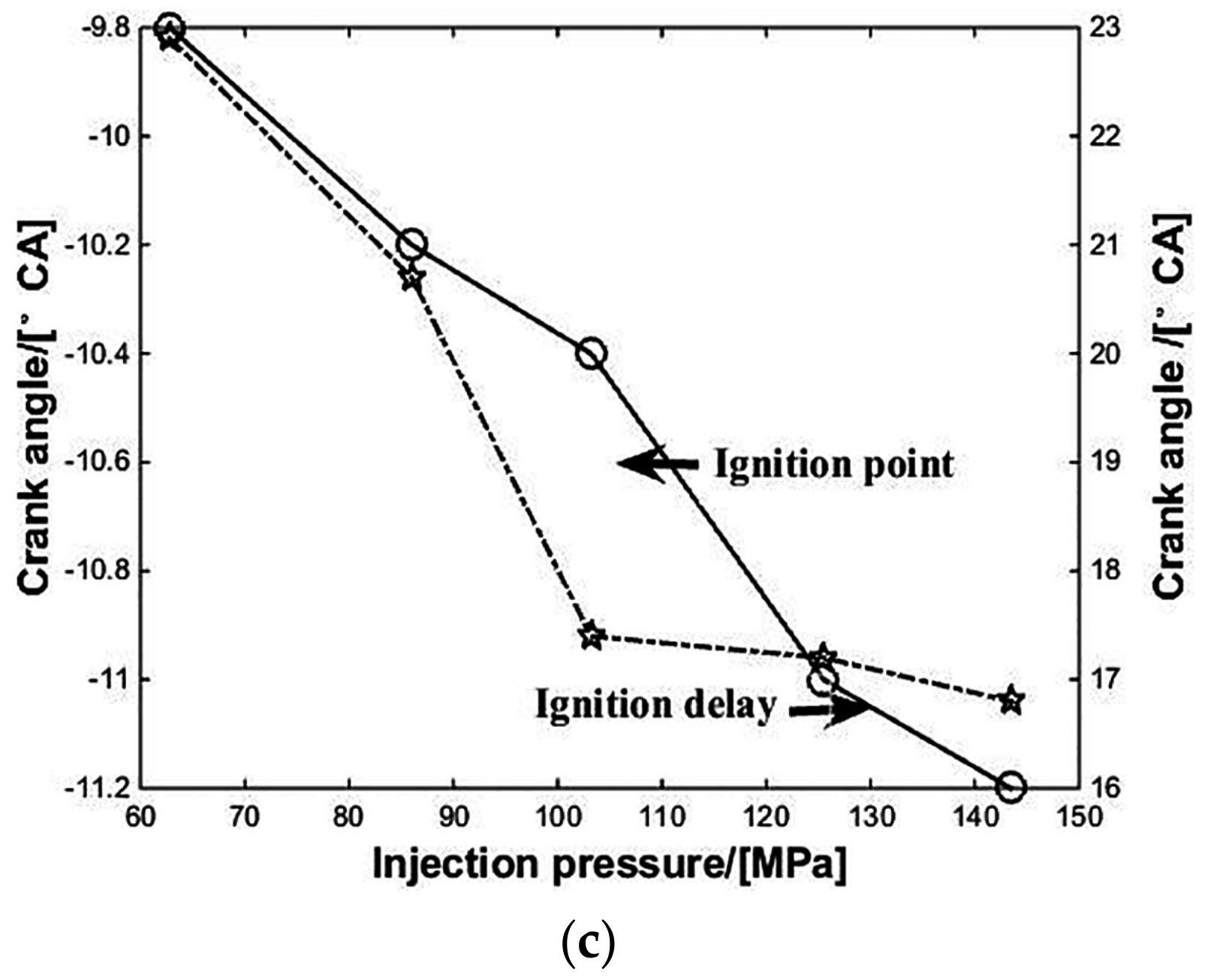
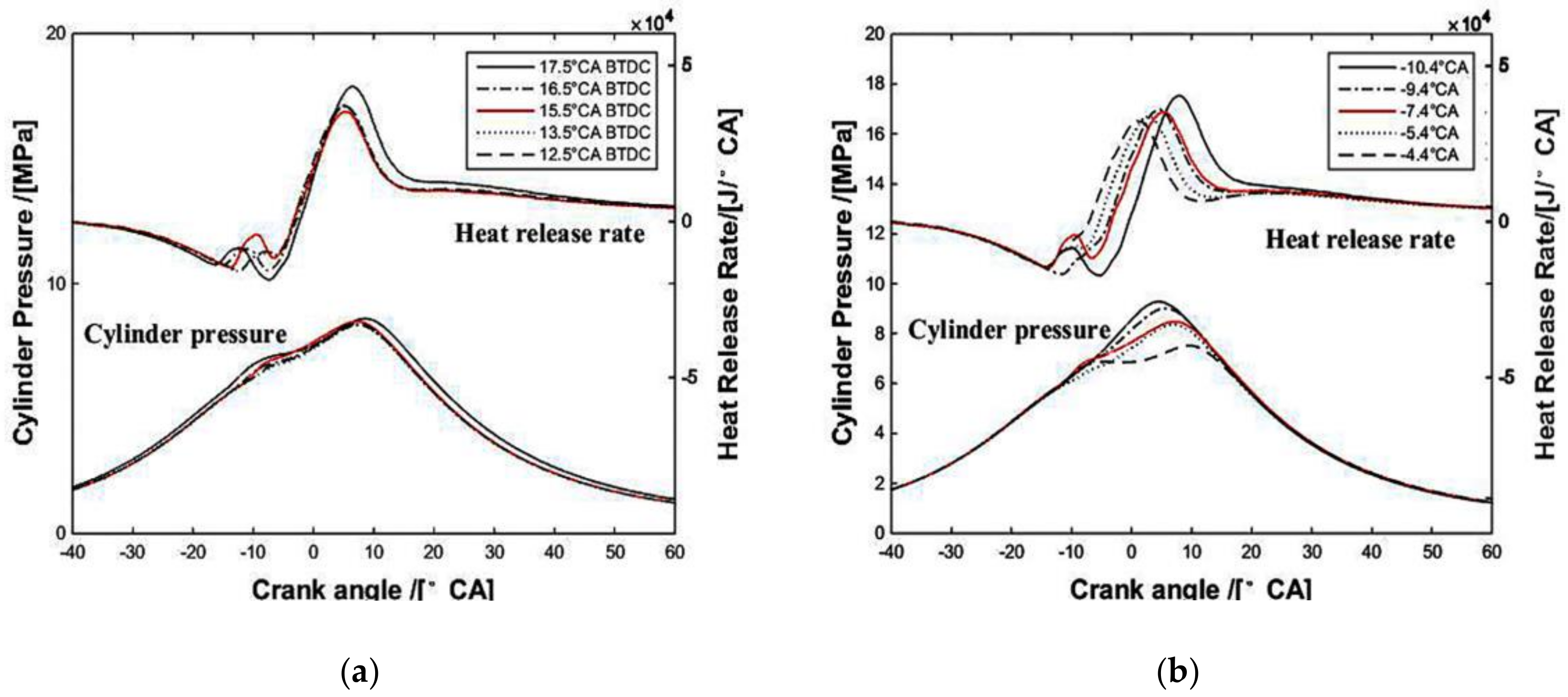
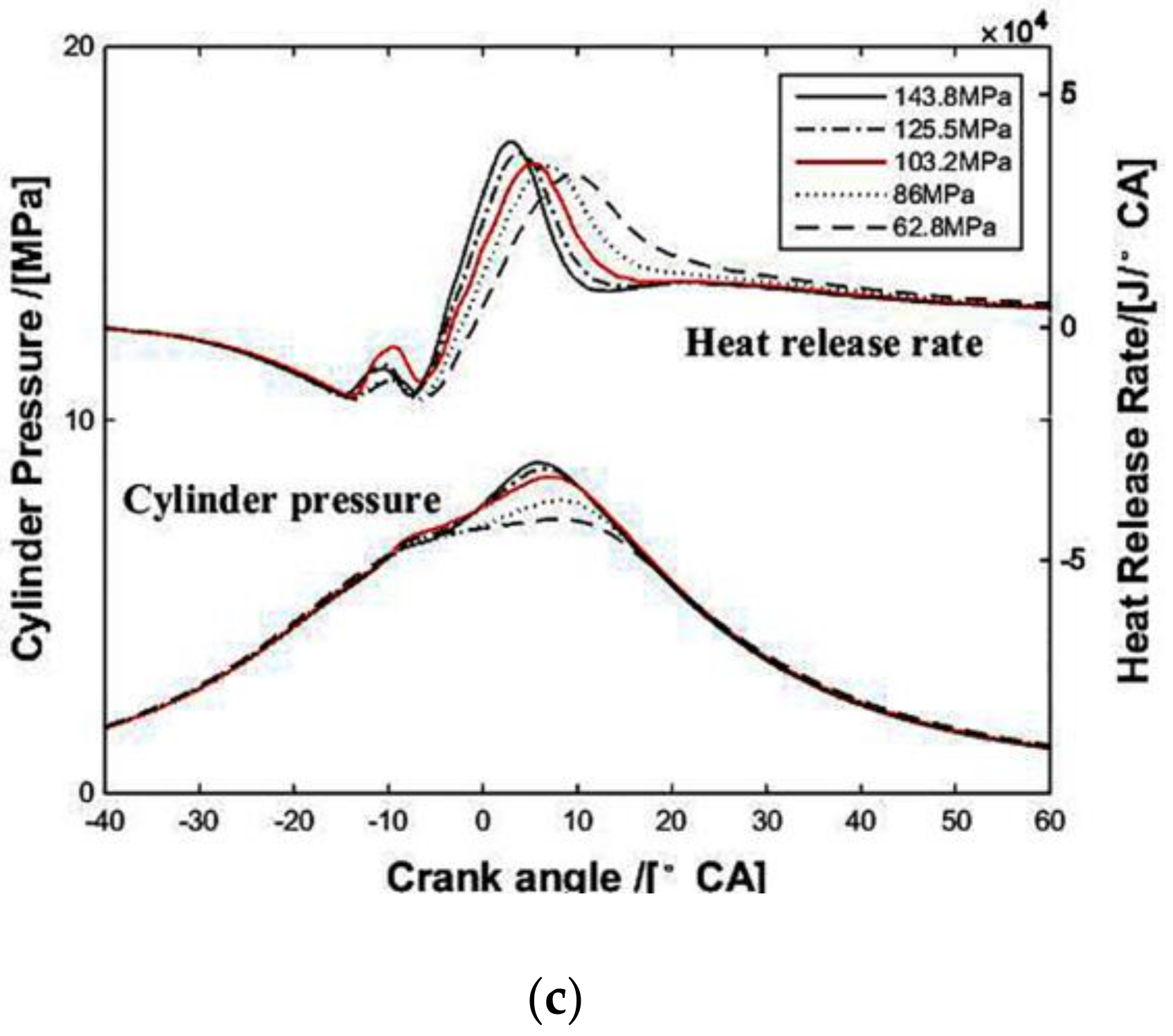
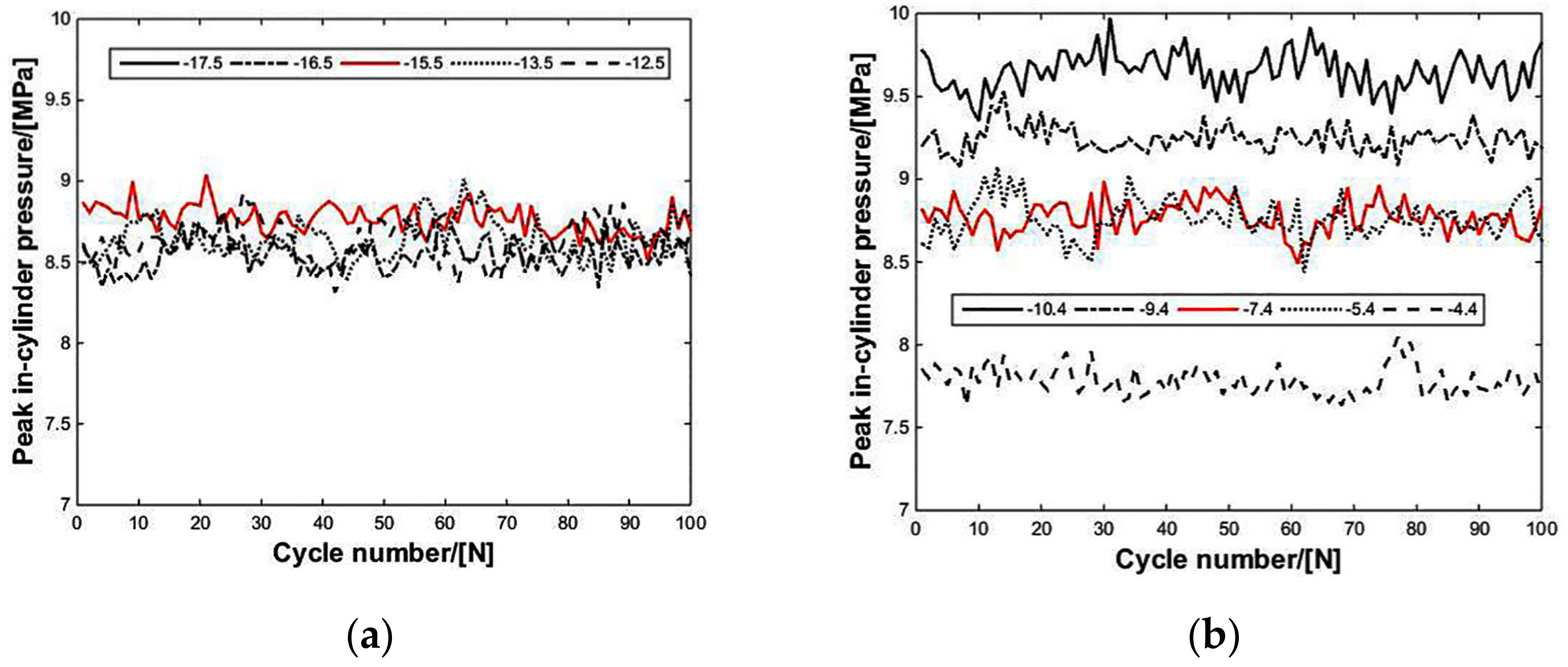
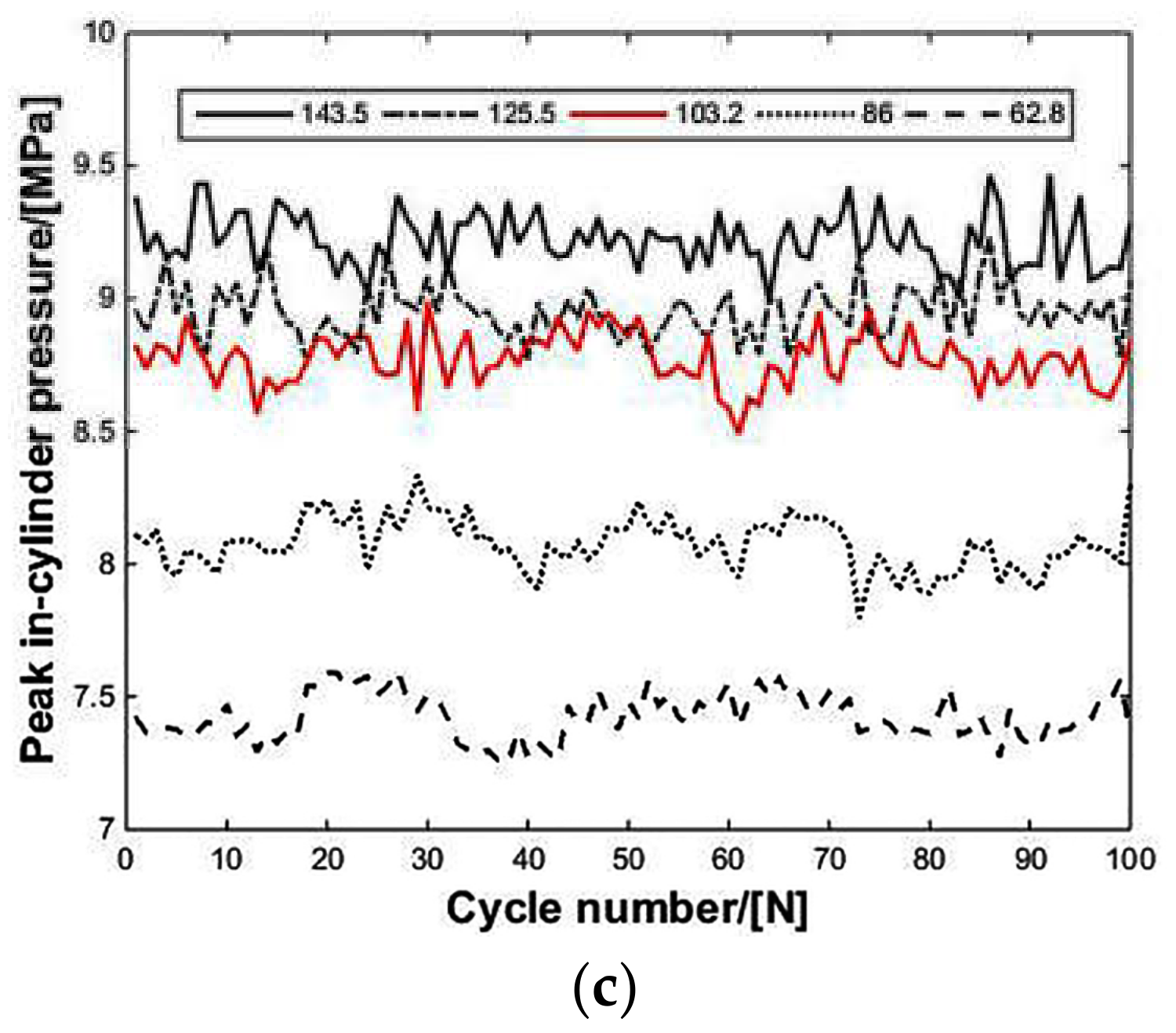
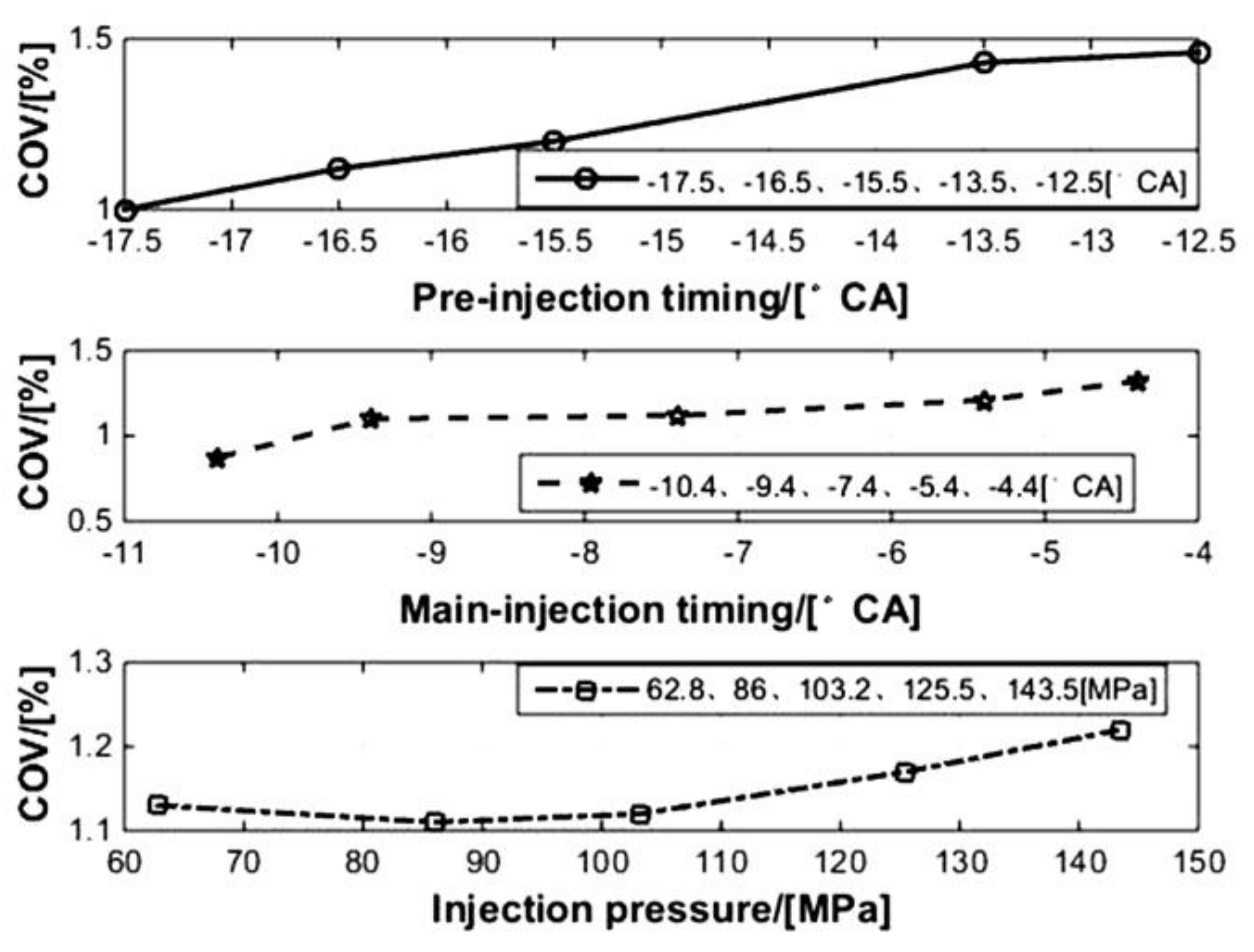
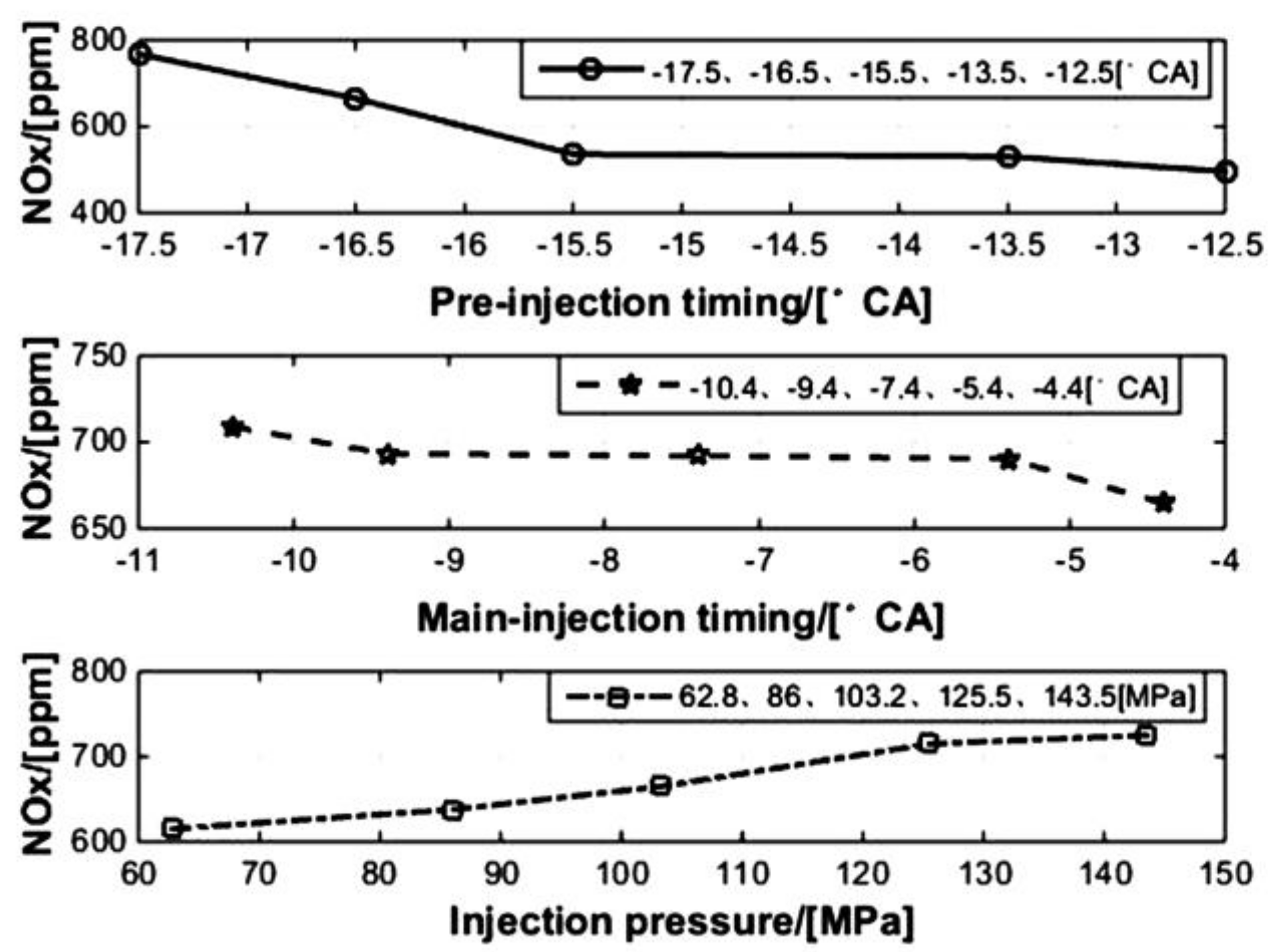
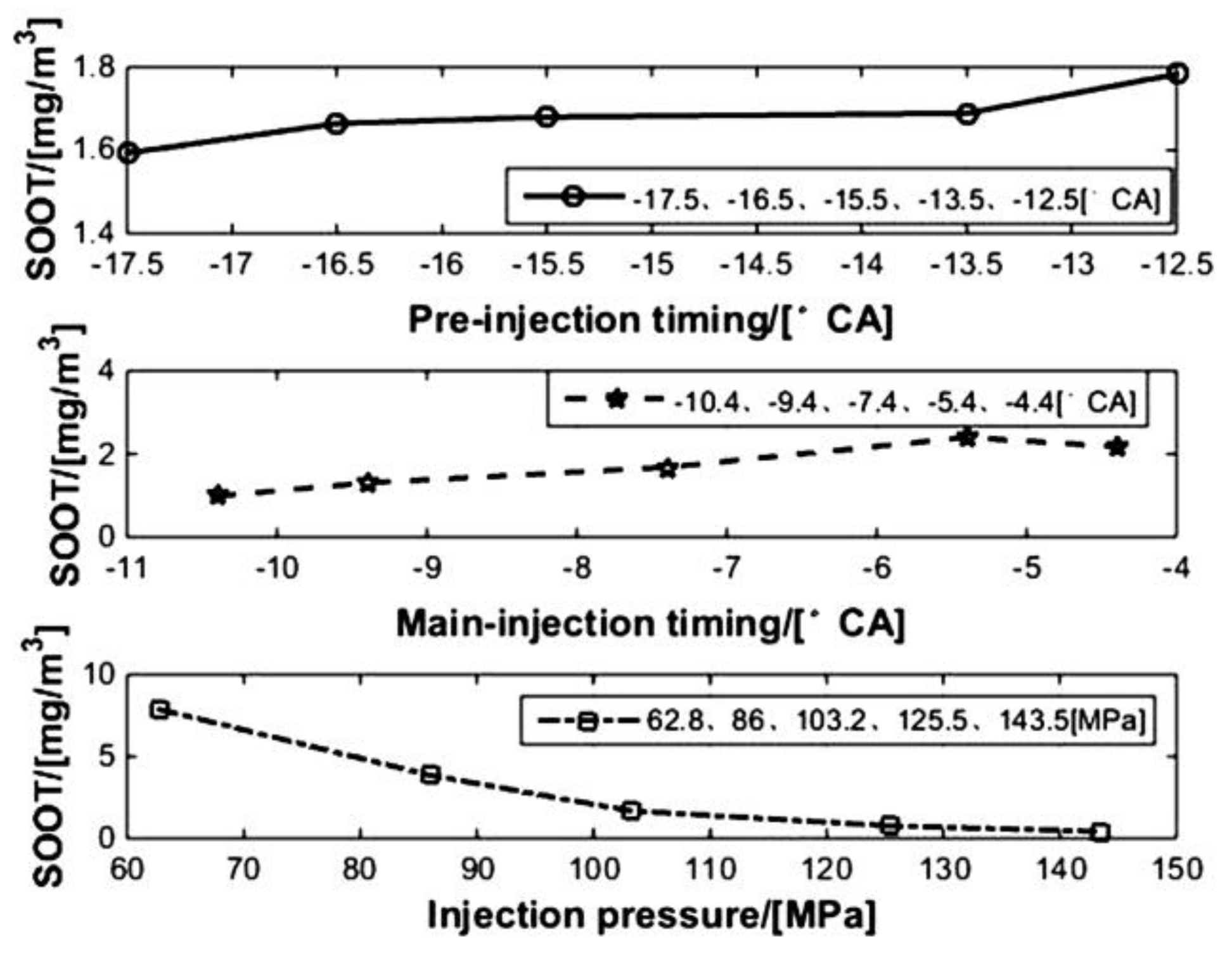
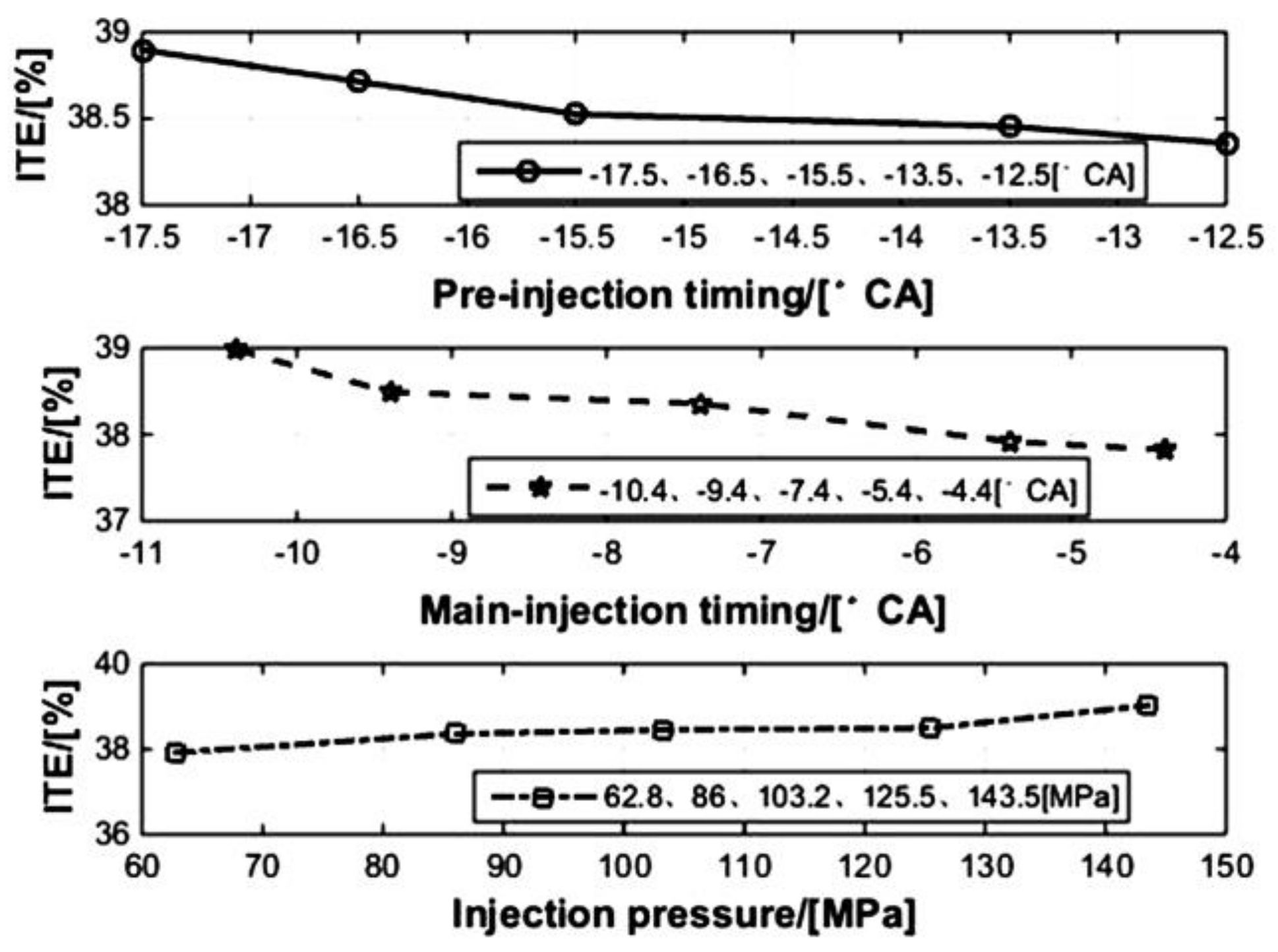
| Specifications | - |
|---|---|
| Model | Electronically controlled |
| Type | Water-cooled, turbo-charged |
| Engine displacement [L] | 3.298 |
| Bore × stroke [mm × mm] | 100 × 105 |
| Fuel injection system | Common-rail fuel system |
| Calibration power [kW]/speed [r/min] | 85/3200 |
| Maximum torque [Nm]/speed [r/min] | 315/1600–2400 |
| Instrument | Parameters | Range | Accuracy | Uncertainty (%) |
|---|---|---|---|---|
| Electric eddy current Dynamometer | Torque | 0–600 Nm | 0.4% | - |
| Speed | 0–8000 r/min | 0.1% | - | |
| Fuel consumption meter | F-T Diesel | 0–20 kg | 0.4% | - |
| Emission analyzer | NOx | 0–10,000 ppm | 20 ppm | 2.8 |
| Smoke meter | SOOT | 0–50 mg/m3 | 0.001 mg/m3 | 0.3 |
| Pressure sensor | In-cylinder pressure | 0–250 MPa | 0.05 MPa | 0.3 |
| Specifications | 0#-Diesel | F-T-Diesel |
|---|---|---|
| Density at 20 °C [g/cm3] | 0.81 | 0.76 |
| Initial boiling point [°C] | 200 | 180.5 |
| End boiling point [°C] | 375 | 311.5 |
| Sulfur content [mg/kg] | 10 | 0 |
| Aromatic content [%] | ≤7 | 0.009 |
| Heating value [J/k] | 42,652 | 47,128 |
| CN | 55.8 | 62.5 |
© 2018 by the authors. Licensee MDPI, Basel, Switzerland. This article is an open access article distributed under the terms and conditions of the Creative Commons Attribution (CC BY) license (http://creativecommons.org/licenses/by/4.0/).
Share and Cite
Shi, J.; Wang, T.; Zhao, Z.; Yang, T.; Zhang, Z. Experimental Study of Injection Parameters on the Performance of a Diesel Engine with Fischer–Tropsch Fuel Synthesized from Coal. Energies 2018, 11, 3280. https://doi.org/10.3390/en11123280
Shi J, Wang T, Zhao Z, Yang T, Zhang Z. Experimental Study of Injection Parameters on the Performance of a Diesel Engine with Fischer–Tropsch Fuel Synthesized from Coal. Energies. 2018; 11(12):3280. https://doi.org/10.3390/en11123280
Chicago/Turabian StyleShi, Jinhong, Tie Wang, Zhen Zhao, Tiantian Yang, and Zhengwu Zhang. 2018. "Experimental Study of Injection Parameters on the Performance of a Diesel Engine with Fischer–Tropsch Fuel Synthesized from Coal" Energies 11, no. 12: 3280. https://doi.org/10.3390/en11123280
APA StyleShi, J., Wang, T., Zhao, Z., Yang, T., & Zhang, Z. (2018). Experimental Study of Injection Parameters on the Performance of a Diesel Engine with Fischer–Tropsch Fuel Synthesized from Coal. Energies, 11(12), 3280. https://doi.org/10.3390/en11123280





